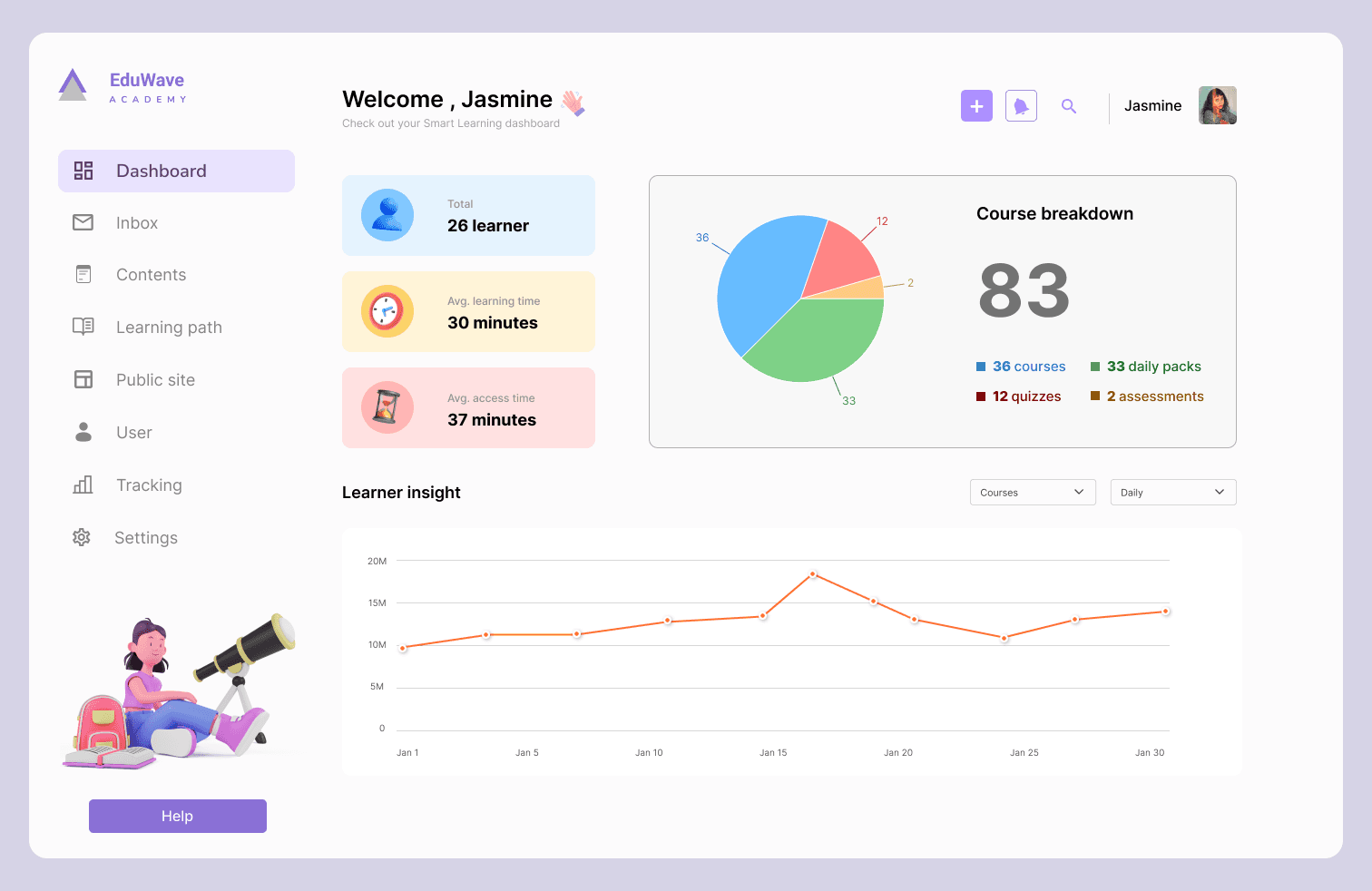Custom Learning Management Systems Made Easy
Build personalized, scalable, and feature-rich learning management systems (LMS) with Appsmith's powerful low-code platform, solving your organization's unique learning challenges.

FAQs
What are the common features of a learning management system?
What are the common features of a learning management system?
Learning management systems (LMS) typically include features like course creation, content management, learner progress tracking, assessments, and reporting. LMS helps you deliver training materials and organize skills development within your team or organization. Appsmith can craft a tailored LMS experience for your users without extensive front-end or design expertise using 45+ pre-built widgets and a wide range of integrations.
Why build a Learning Management System instead of buying one?
Why build a Learning Management System instead of buying one?
Building a Learning Management System (LMS) yourself can offer several advantages, such as the benefit of customization, allowing an organization to tailor the LMS to its unique training and development needs. Buying an LMS can prove to be unnecessarily expensive. Besides, the superfluous features that are inbuilt can make the user interface complicated. Building a custom LMS using Appsmith allows you to create a platform that caters to your organization's specific needs while avoiding the unnecessary features and costs associated with off-the-shelf solutions.
What are the challenges of building a Learning management system?
What are the challenges of building a Learning management system?
Building a Learning Management System (LMS) presents challenges such as the need for technical expertise, extensive time and resources, scalability, complicated integration with other systems, and user adoption. Organizations must address these challenges to build an effective LMS that meets the needs of their educators and learners. Appsmith's low-code platform tackles these challenges by offering pre-built connectors, widgets, and templates that accelerate your LMS development process.
Which teams use Learning management systems the most?
Which teams use Learning management systems the most?
Learning management systems are widely used by various teams, such as HR for employee onboarding and training, product teams for user education, and educational institutions for delivering and managing course content. LMS platforms built with Appsmith can be tailored to meet the specific requirements of these diverse teams, providing a flexible and powerful solution to enhance learning experiences.
Why Appsmith for Learning management system?
Low-Code Platform for Educators
Teachers can build and deploy an LMS based on their students' needs without learning to code. Appsmith's simple drag-and-drop interface makes it easier for teachers to create an interactive LMS in no time.
Extensive Widgets for Interactive UI
Educators can customize their LMS with Appsmith's extensive library of widgets. Using pre-built widgets, they can add features such as a document viewer, form for data collection, audio recorder, and video player to make their LMS UI more interactive.
Do magic with widgets
Table for Data Management
The Table widget helps you organize your data for better representation. You can use it for managing and displaying course content, learner data, and progress reports.
Charts for Visualization
The Chart widget enables you to visualize and share insights into user data. You can use it to visualize learning analytics and insights to drive better outcomes.
Container for better User Interface
The Container widget assists you in grouping different widgets together. Use it for organizing LMS components for an intuitive and seamless user experience.

Get live support from our team or ask and answer questions in our open-source community.
Watch video tutorials, live app-building demos, How Do I Do X, and get tips and tricks for your builds.
Discord
Videos
Do more with Appsmith
Ship a portal today.
We’re open-source, and you can self-host Appsmith or use our cloud version—both free.